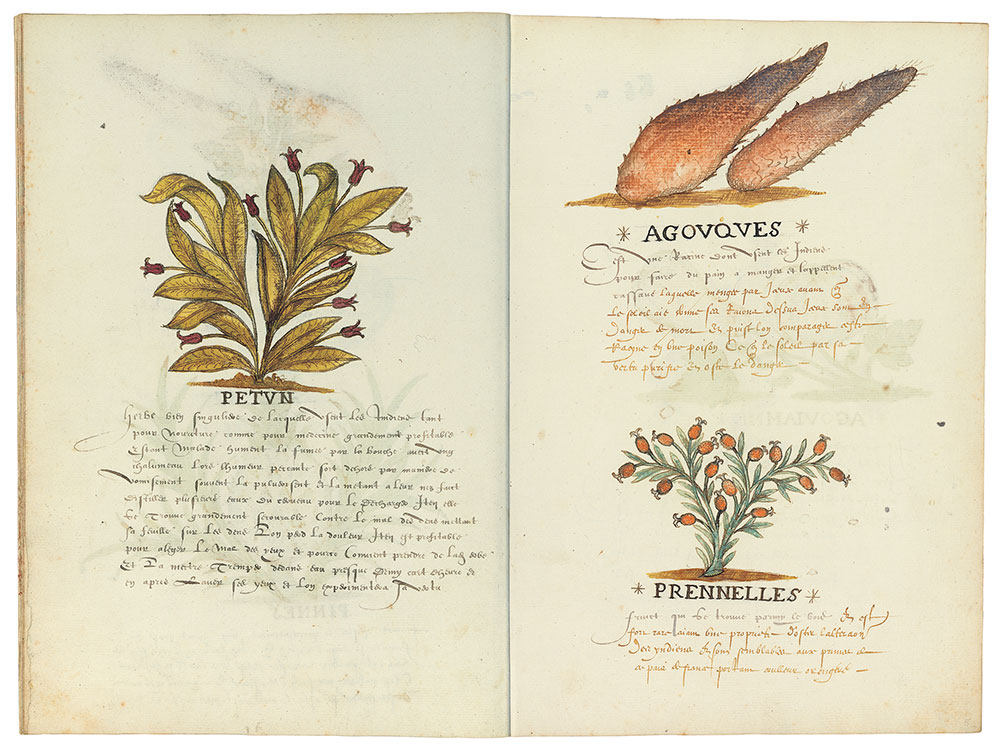
Histoire Naturelle des Indes
Illustrated manuscript
Bequest of Clara S. Peck, 1983
In 1983, The Morgan Library & Museum received, as the bequest of Clara S. Peck, an extraordinary volume whose beautiful paintings and descriptions document the plant, animal, and human life of the Caribbean late in the sixteenth century. Spaniards had already begun to exert influence over the indigenous people of the area when explorers from England and France arrived, among them Sir Francis Drake. The volume, known as the Drake Manuscript and titled Histoire Naturelle des Indes when it was bound in the eighteenth century, gives us a wonderful picture of daily life at the time of Drake's many visits to the region. Although Drake's connection to the manuscript is uncertain, he is mentioned on more than one occasion by the authors. Drake himself is known to have painted, but none of his work survives.
Contents: 199 images of West Indian plants, animals and human life, with accompanying manuscript captions written in late sixteenth-century French.
Medium: Most of the illustrations consist of a black chalk underdrawing and a combination of pen and brown ink with watercolor; on some images selected areas have also been glazed with a gum.
Binding: Bound or rebound in brown leather in the late 18th century.
Pagination: Penciled folio numbers (1–125) in lower right corner of each page were added by The Morgan Library & Museum. Folios 92v–93, 93v–94, and 95v–96 are fold-out leaves.
Petvn (Tobacco)
A special herb which the Indians use for food as well as an extremely beneficial medicine; when they are sick, they breathe in the smoke by mouth with a straw; soon the ill humour escapes by vomiting. They often pulverize it and, putting it in their noses, it distills several drops of water from the brain to discharge it. It also is found very helpful for toothache; laying its leaves on the teeth, the pain disappears; it is also beneficial for alleviating eye problems and, for this [purpose], it is advisable to take the herb and steep it in water about half of a quarter of an hour and then wash one's eyes and one will experience its benefit.
Agovqves (Cassava)
This is a root which the Indians use to make bread; they call it cassava, which, when eaten before the sun sends its rays upon it, puts them in mortal danger; one can compare the root to a poison which the sun with its power purifies, and thus removes the danger.
Prennelles (Prunelle, Sloe)
This is a fruit which is found in the wood and is very rare, having the particular virtue of quenching the thirst of the Indians. They are similar to the plums of France, having an orange color.
